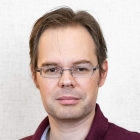You are here
Neurotechnology
Scalable Neurological Assessment Platform (SNAP) is the vision of several scientists and clinicians at the Burke Neurological Institute and Blythedale Children's Hospital for the future of neurorehabilitation.
The main problems SNAP seeks to address are:
- Poor ability to assess the relative effectiveness of neurorehabilitation therapies;
- Poor ability to predict individual outcomes, especially in severe cases.
The status quo is:
- The clinical practice of neurorehabilitation aims to change the brain, but typically does not measure the brain in any way (particularly not functional brain activity).
- Measures of function tend to be subjective and have poor sensitivity and low dynamic range.
- Researchers tend to test the significance of differences in feature X between small balanced groups in homogenized populations. To make personalized medicine a reality and serve patients better, we need to focus more on the predictive value of X for all individuals in a heterogeneous population.
Although there are well-established technologies for objectively quantifying brain activity (e.g. fMRI and EEG) they are not used in clinical practice. Likewise, technology for objectively measuring movement of the body has existed for decades, but is scarcely used in practice, leaving clinicians to rely on subjective, qualitative, insensitive tools like the Fugl-Meyer Assessment. In both cases the reason for the lack of adoption is that the technologies rarely run "out of the box" and hence require expert oversight and troubleshooting on a case-by-case basis, this is the opposite of what we mean by "scalable". We aim to develop robust systems that will be deployable with minimal specialist training, at a large number of sites, with commensurate results.
Our strategy is three-fold:
- Computerized tracking: we will obtain objective, quantitative measurements of physical movements to track and assess neurological impairment (e.g. eye-tracking, markerless motion capture technologies for hand and body movements).
- Real-time physiological measurement: reliable, robust implementations of dry, wireless EEG systems have recently emerged. We will use these to record brain event- and task-related brain activity, along with wearable sensors that measure other bio-signals.
- "Big Data" analysis: we will perform short, standardized tracking and measurements on large numbers of children and mine the data to generate hypotheses in a data-driven way, to address the question of what works and what does not work in neurorehabilitation. Hypotheses will be tested on future subjects according to a continuous rolling program.

